
Tomato hornworms are an unforgettable tomato pest. They’re big, green, and while somewhat pretty, have a terrifying aura about them.
Considered one of the most destructive garden pests, tomato hornworms can quickly wreak havoc on your tomato crops.
These monstrous caterpillars seemingly devour entire tomato plants overnight, making them a true force to be reckoned with.
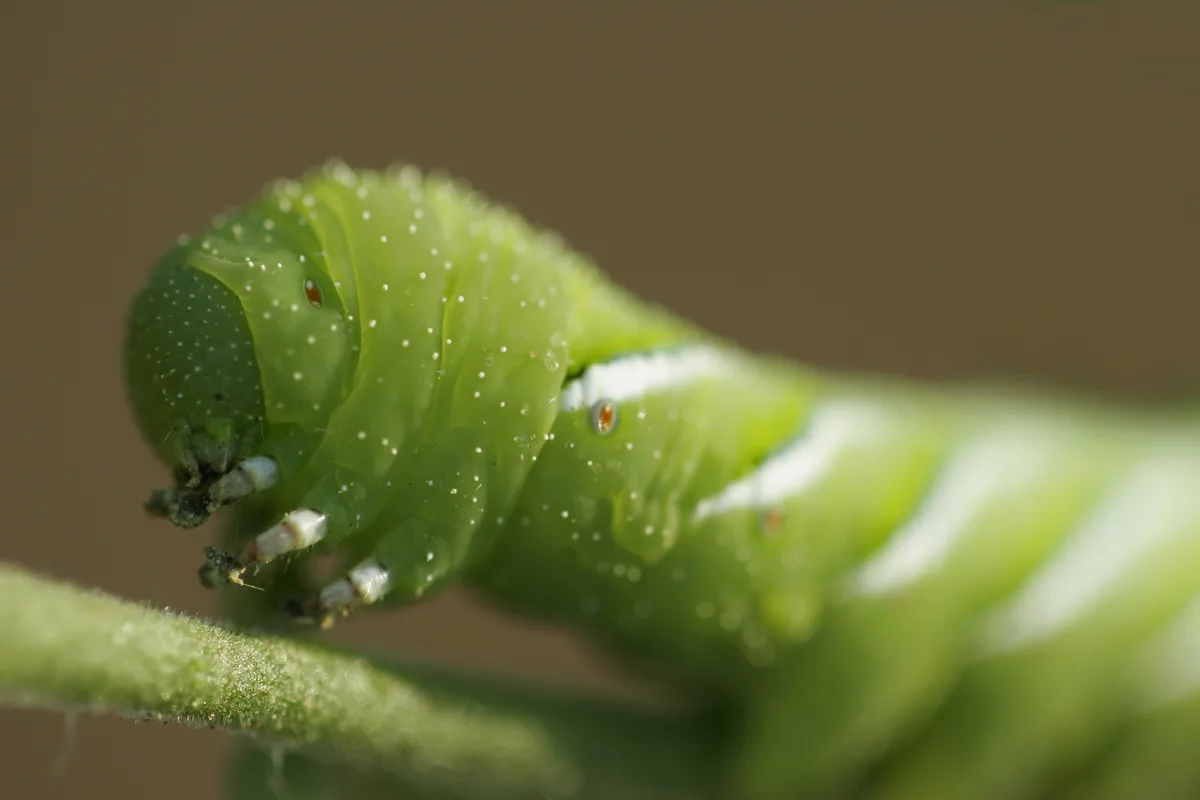
Unfortunately, tomato hornworms are prevalent across the continent and chances are, you’ll have to deal with them at some point.
Luckily, these little creatures are easy to control, if caught in time. There are also several easy preventative measures you can put into place to keep these destructive pests off your beloved tomato plants.
Tomato Hornworms
Identifying Them
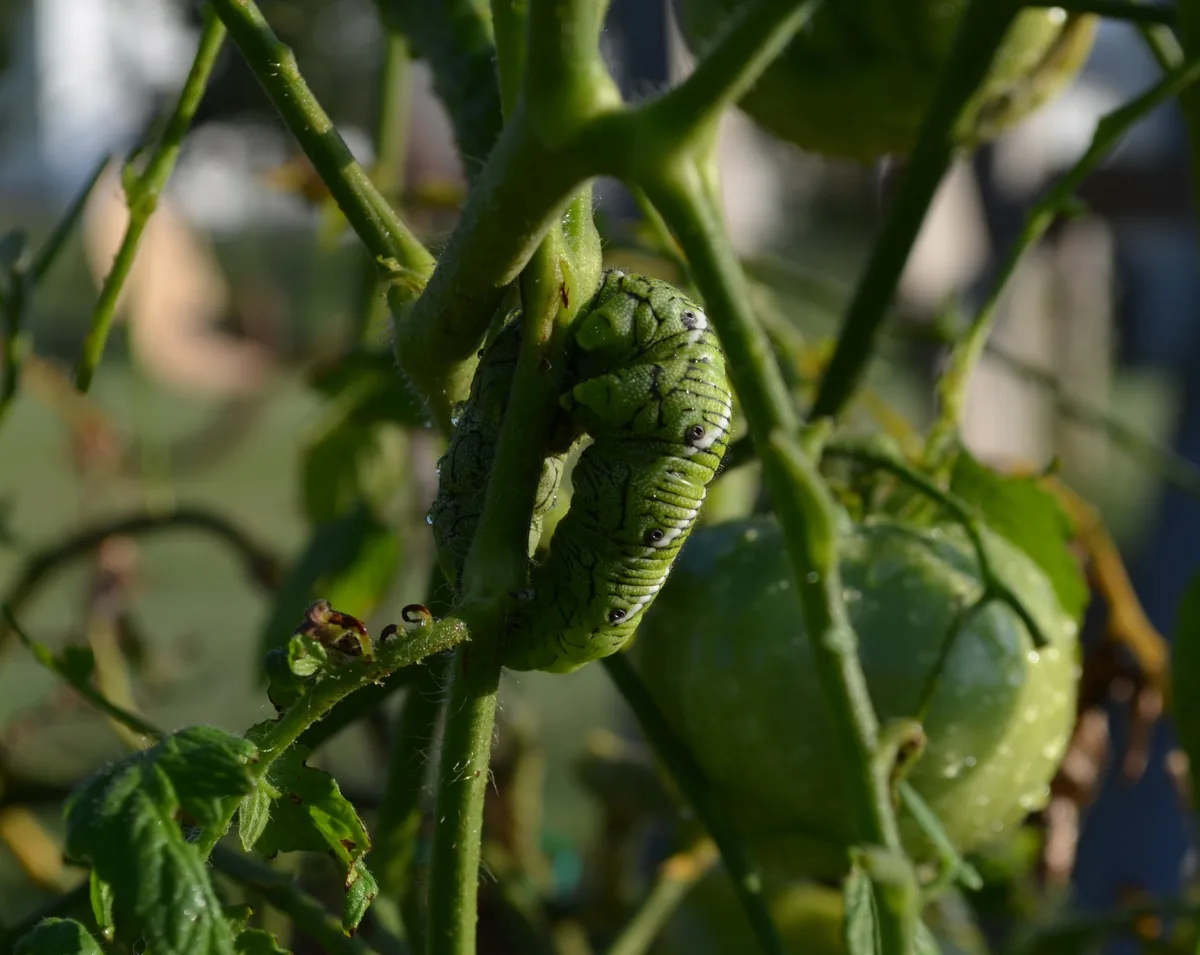
Unlike other common tomato pests, tomato hornworms are easy to spot, thanks to their sheer size. These caterpillars can be between three and five inches long – adding to that terrifying aura of theirs.
Despite their name, the tomato hornworm doesn’t only munch on tomatoes. You can often find them nibbling away on other members of the Solanaceae family, most notably peppers, eggplants, and potatoes.
As big as they are compared to other pests, their green bodies tend to blend into the green tomato foliage. But once you know what to look for – they’re hard to miss.
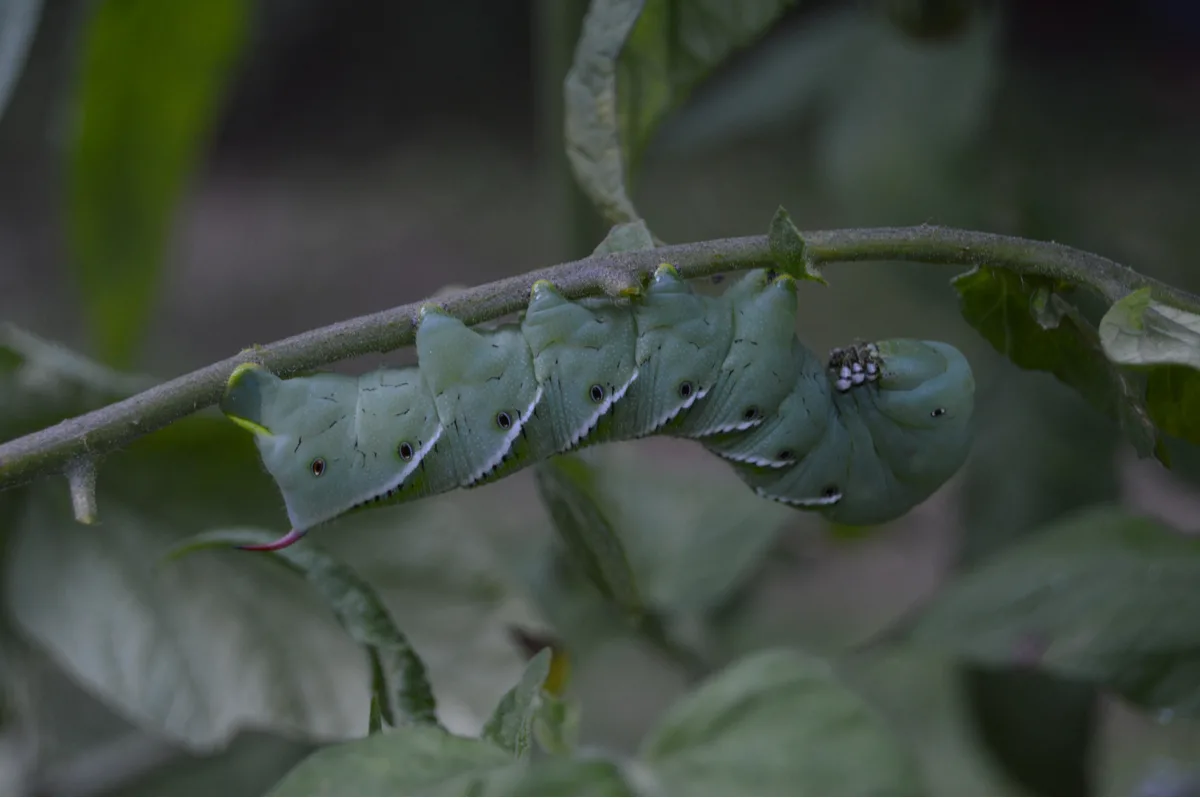
Tomato hornworms have a long black horn sticking out of their rear that makes them discernable. As scary as it seems, this horn is luckily harmless. They also have an eye-catching row of white and black spots along with their light green bodies, accompanied by V-shaped stripes.
They mature rapidly and will eventually burrow in the soil to enter the final stage of their life cycle. The tomato hornworm pupae are large and reddish-brown. They can also overwinter in the soil, making them even more dangerous and a long-lasting threat.
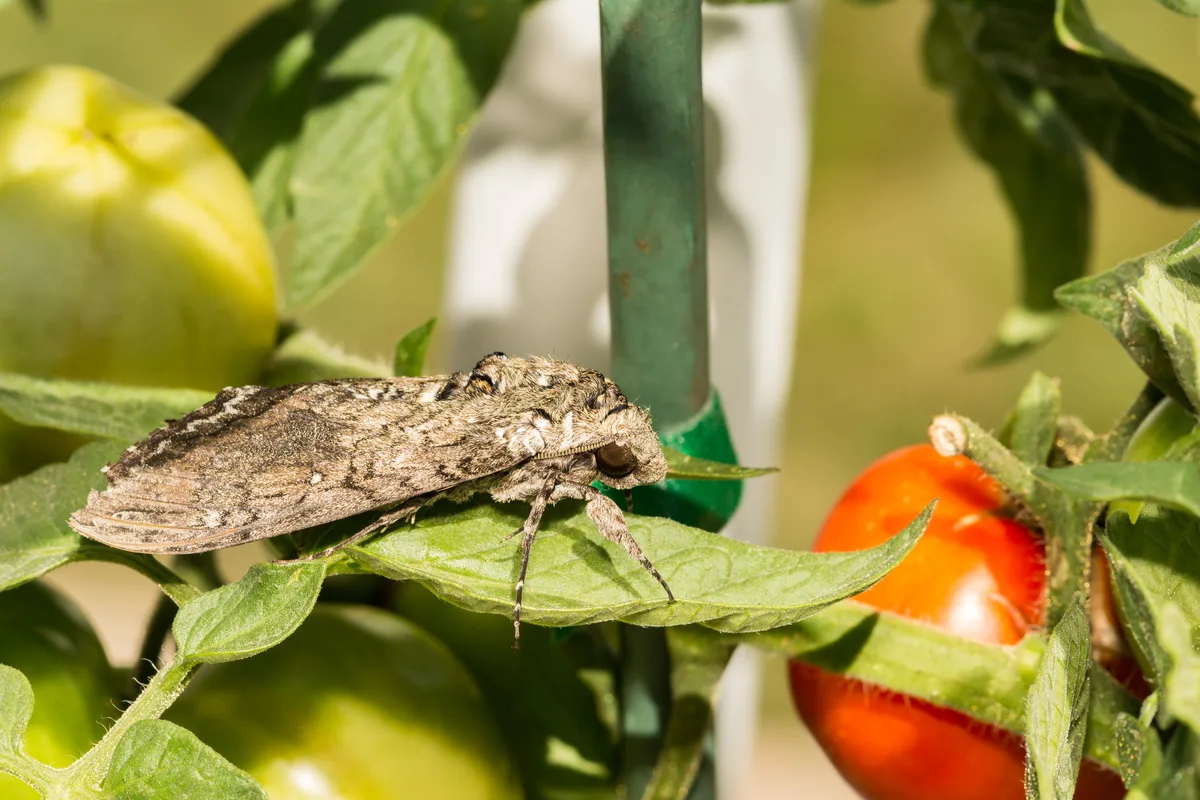
When tomato hornworms emerge, they do so as large grey moths, known as hummingbird moths. They’ll eventually go on to lay light green eggs on the undersides of leaves, starting the destructive cycle all over again.
They can lay as many as 2000 eggs over one month. The eggs are usually laid at night, on the undersides of leaves. The eggs are light green and just before they hatch – usually a week after being laid – they turn white.
The Damage They Cause
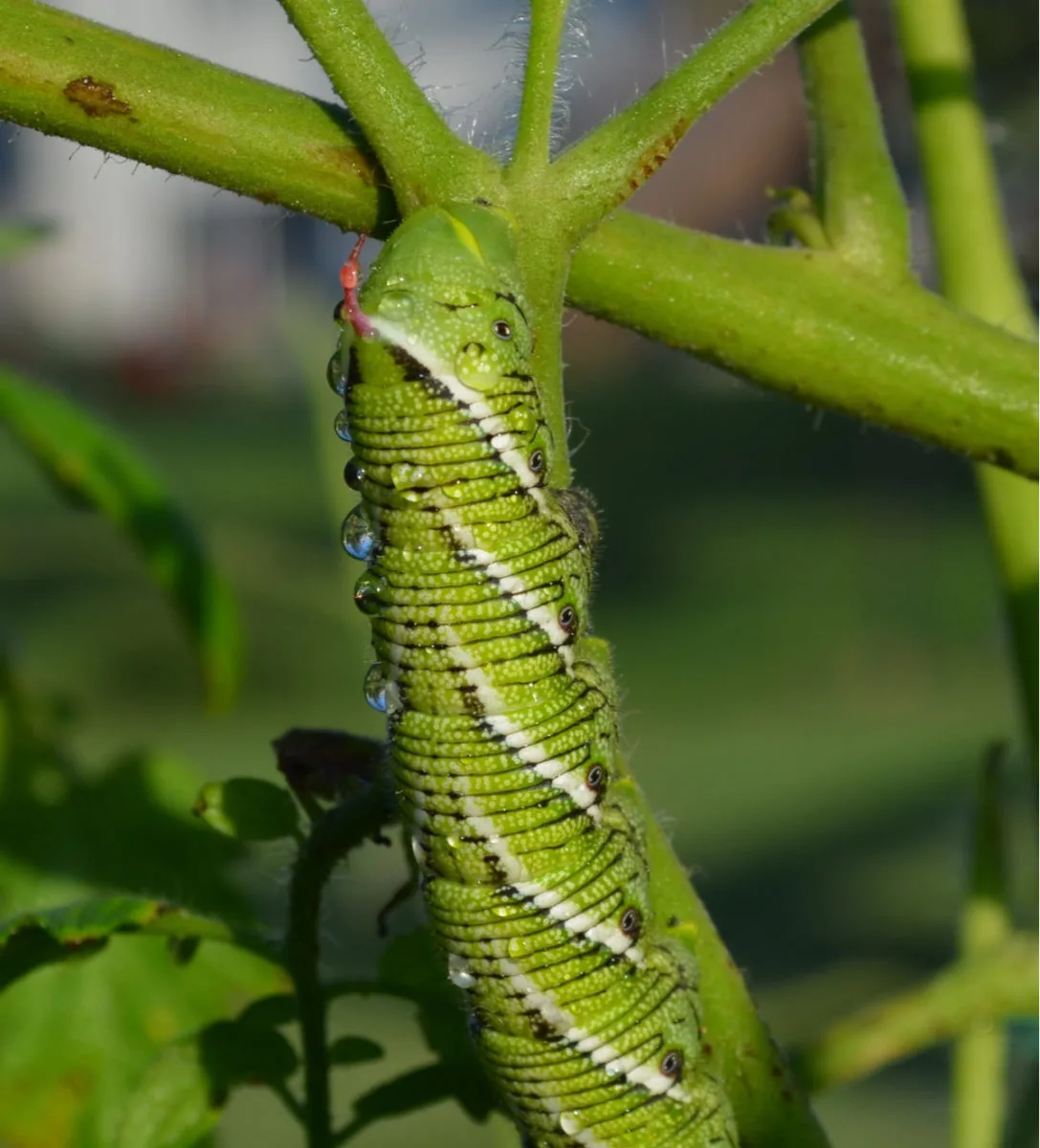
You’ll probably notice the damage these pests cause before spotting them crawling along with your tomato plants. Tomato hornworms are famous for their large appetites, often defoliating entire plants in no time at all.
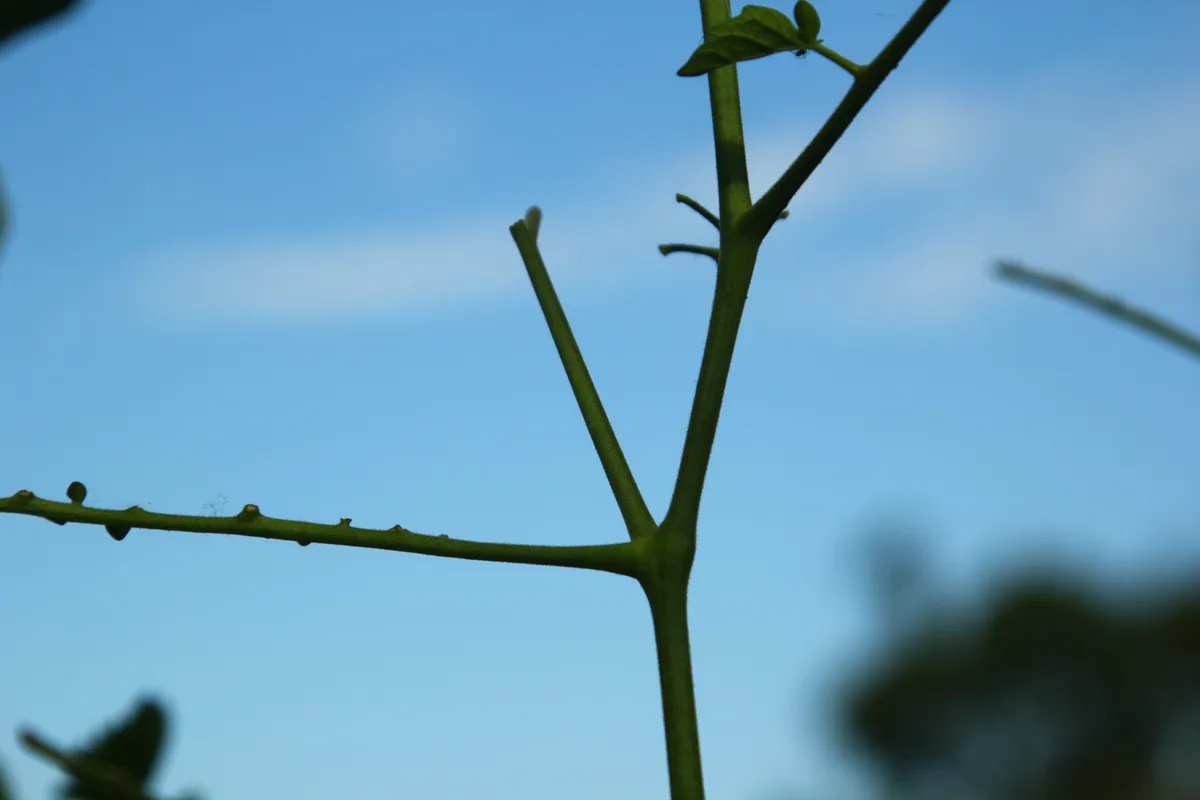
If you haven’t guessed, tomato hornworms’ favorite meals are tomato plant leaves. However, they’re not fussy and will quickly move on to munching on plant stems as well. They usually begin at the tops of your tomato plants, leaving gaping holes in the foliage or simple little stumps of stems.
Once they’ve stripped the plant of its gorgeous foliage, tomato hornworms will move on to the delicious juicy fruits.
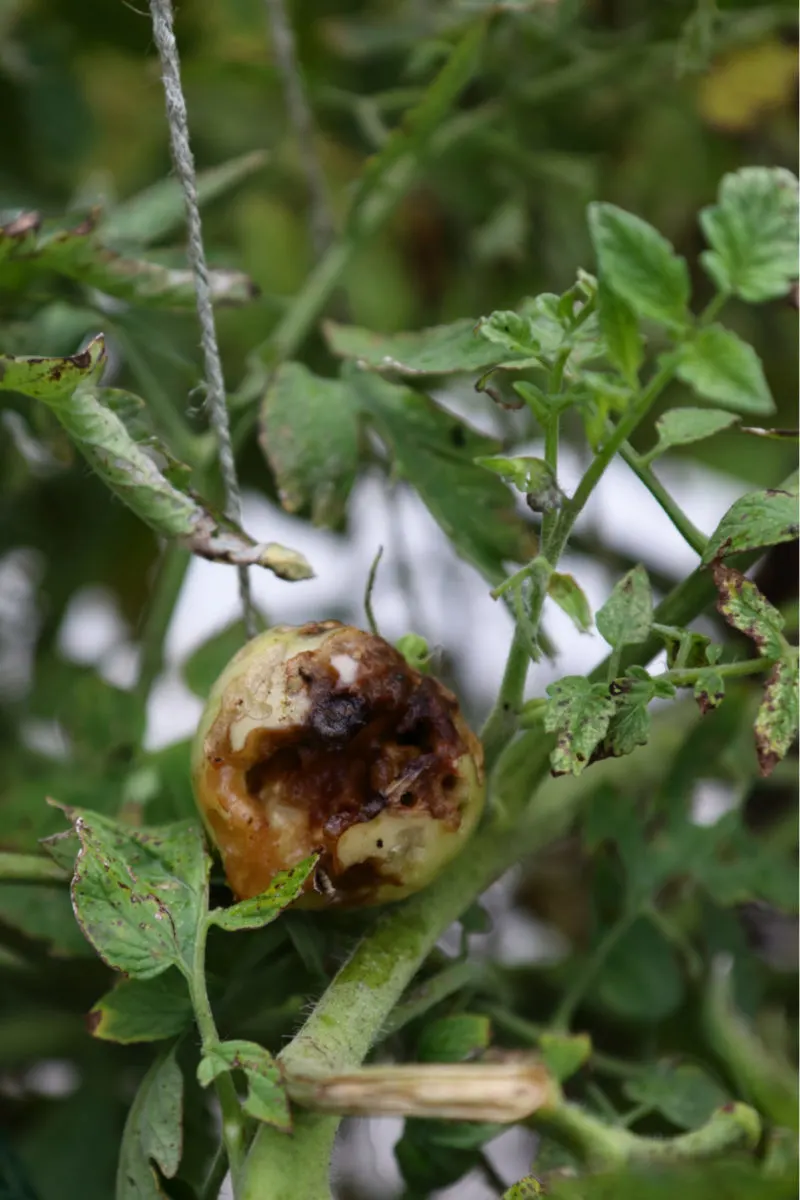
Their damage is very similar to other leaf-munching pests, sometimes making it difficult to know which bug you’re dealing with. However, tomato hornworms often leave behind large black droppings on what’s left of the leaves.
If the large, gaping holes aren’t enough of a tell, those black droppings sure are. Once you notice any of these signs, you need to act quickly. Luckily, they’re not too difficult to get rid of or prevent.
Controlling and Preventing Tomato Hornworms
Handpicking
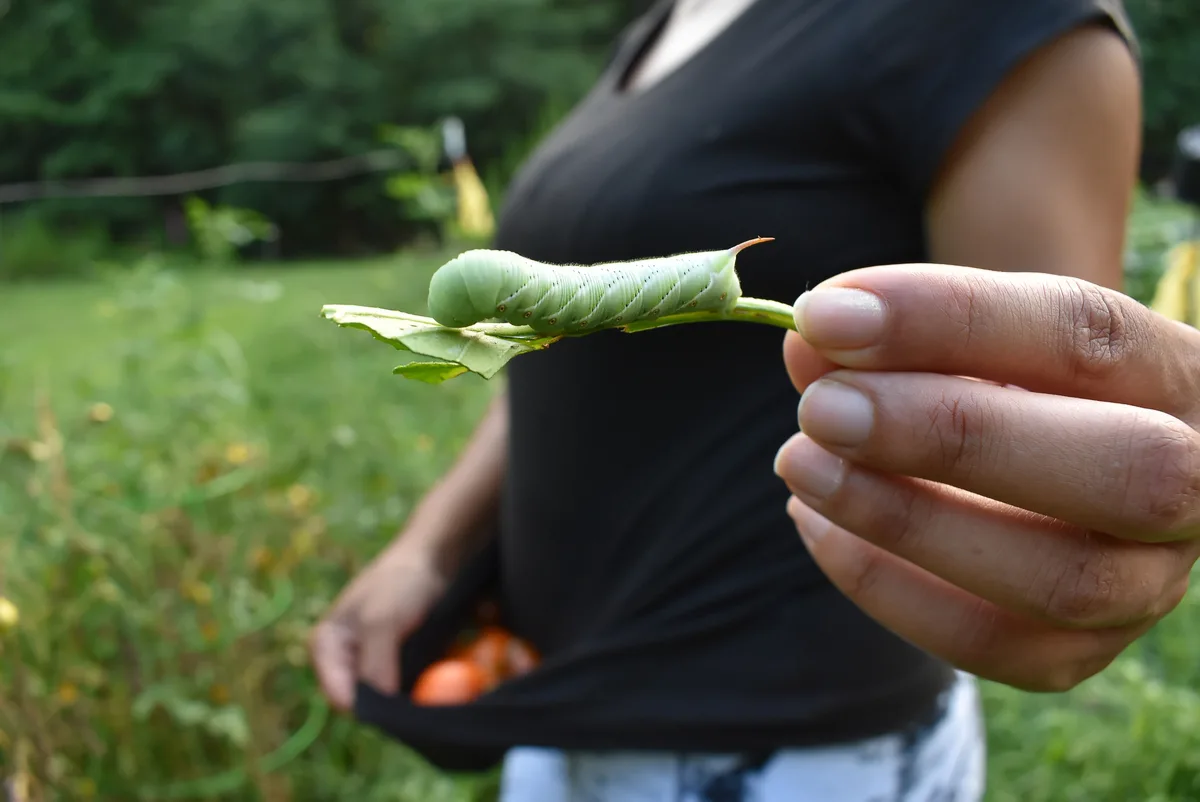
In the quest of controlling and preventing tomato hornworms, natural ways are surprisingly the most effective.
The most natural method of getting these large green caterpillars off your tomato plants is by picking them off. If you’re a seasoned tomato grower, this method is not a foreign one.
As scary as they may seem, they’re not dangerous to humans. You can handle them without fear of being bit or stung. Once you’ve caught them, you can either relocate them (they become moths that are great pollinators for your garden), or you can drop them into a bucket of soapy water to get rid of them for good.
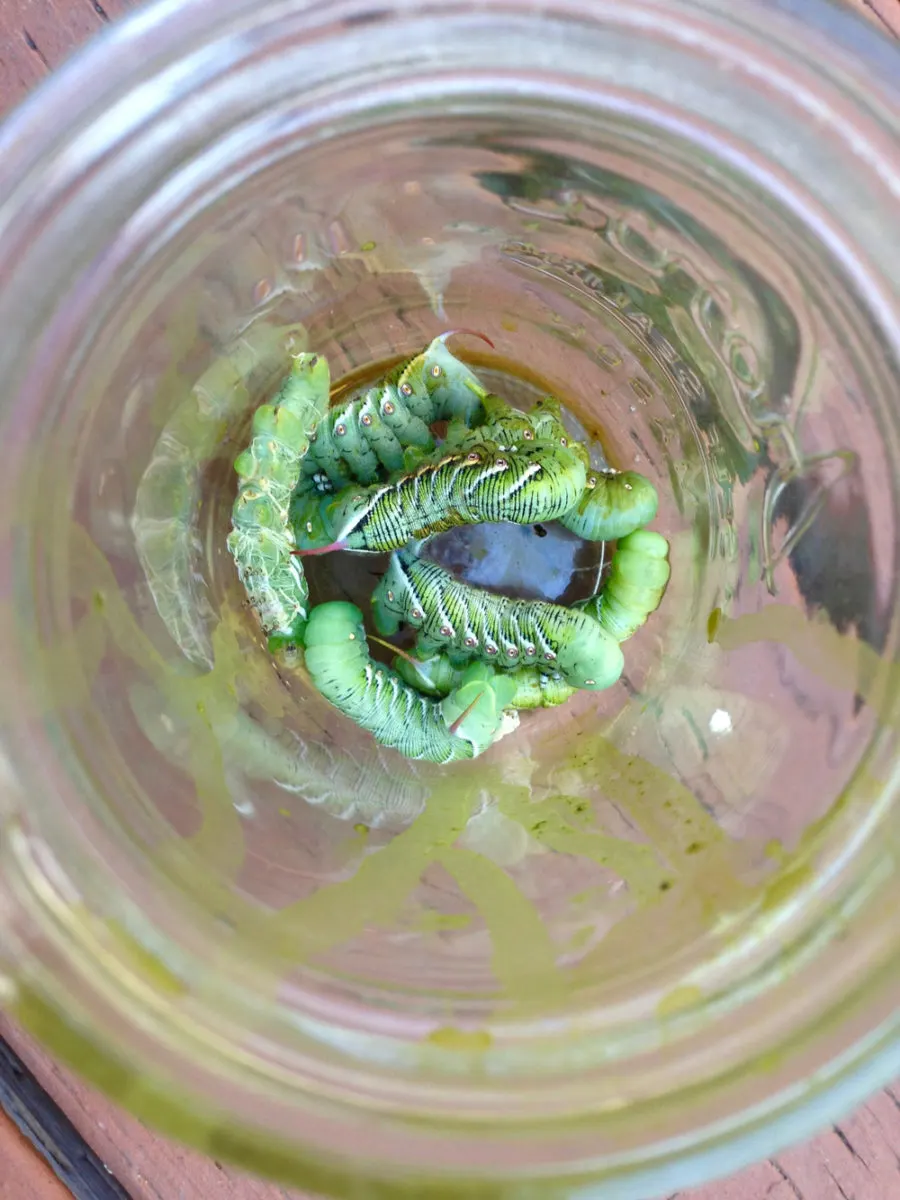
Alternatively, if you’ve got chickens on your property, you can feed them your caught tomato hornworms.
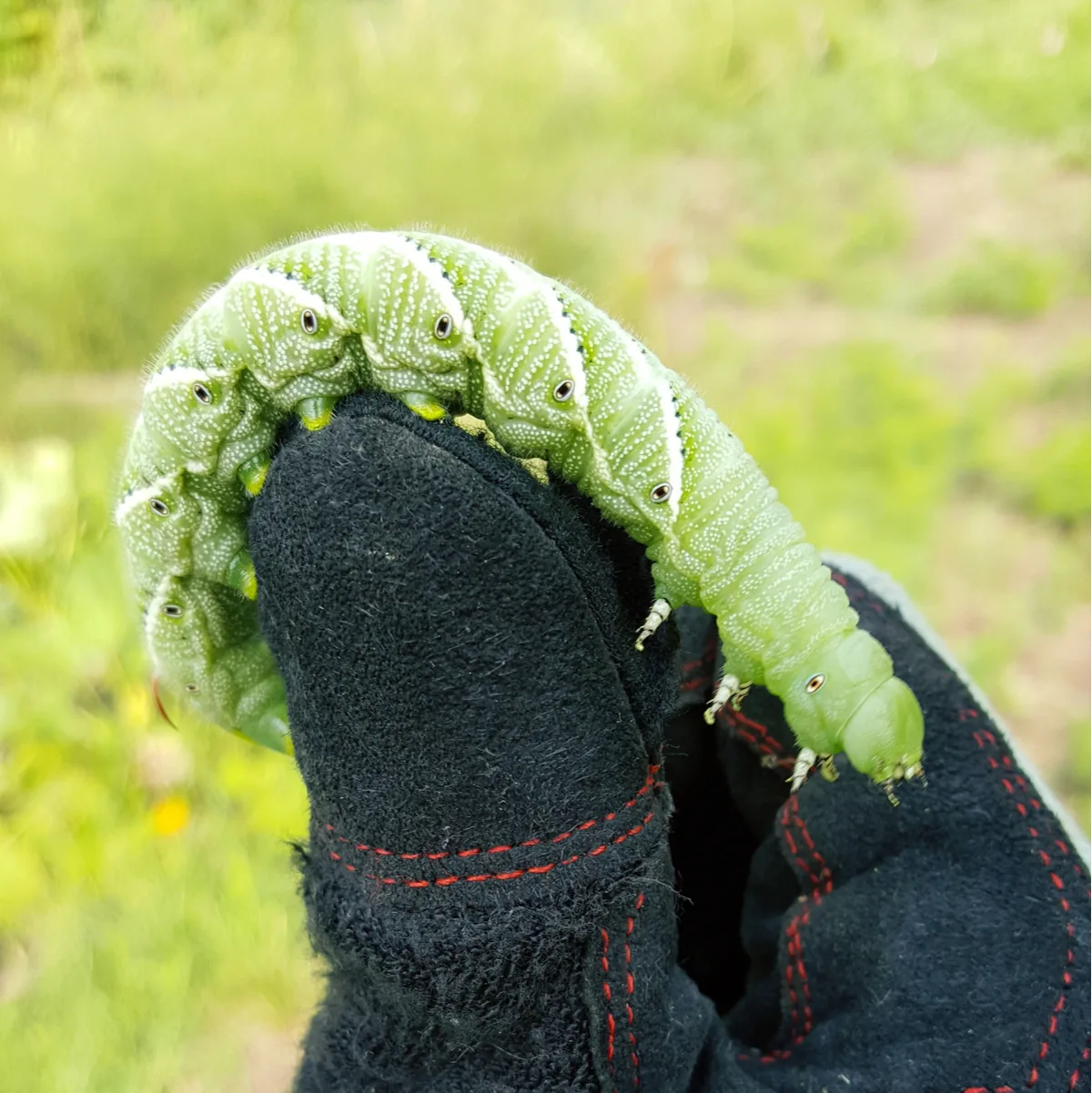
As tomato hornworms blend well with the green foliage, hunting them down can be tricky. You can spray your tomato plants with a bit of water to get them moving, making them easier to spot and catch.
Or you can arm yourself with some gloves and a UV lamp and begin your tomato hornworm search at night. Their green bodies glow under the UV light, allowing you to catch and get rid of them quickly.
Introducing Companion Plants and Beneficial Insects
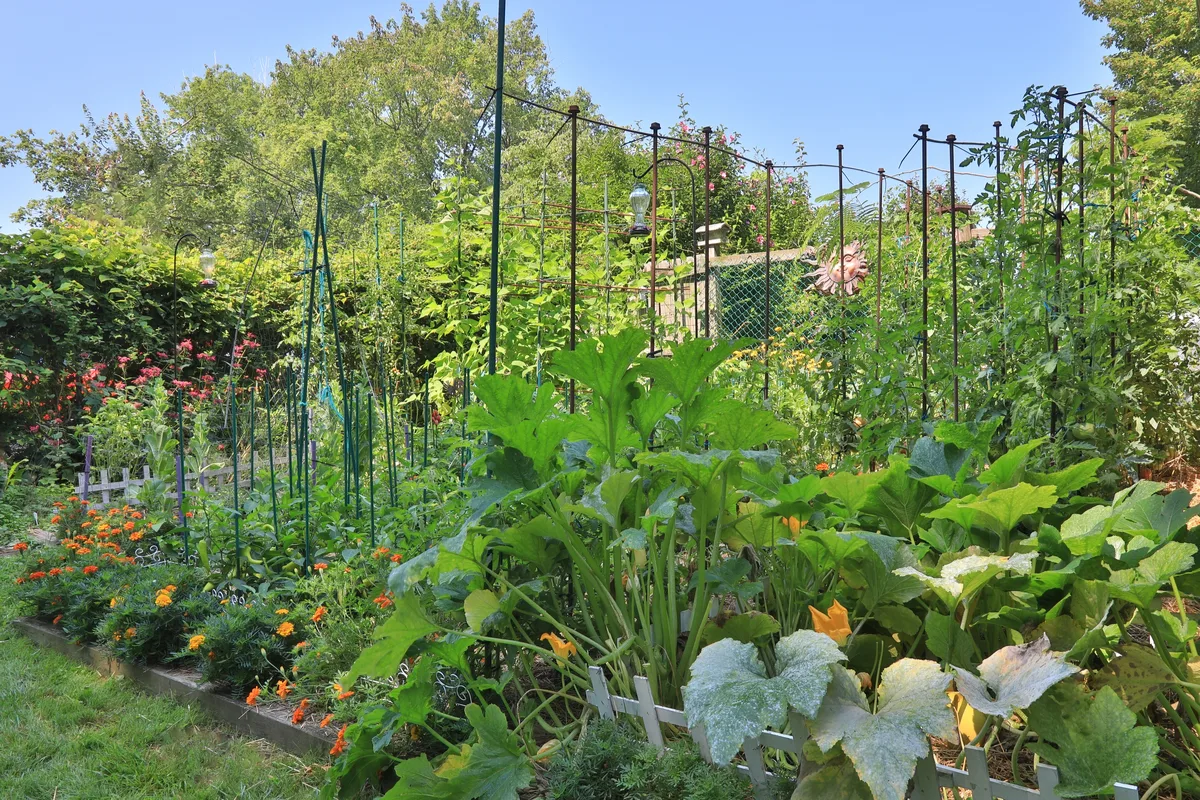
Another great natural control and prevention method in the fight against tomato hornworms is the introduction of beneficial insects.
There are several good bugs out there that protect your tomatoes and other vegetables. In the war against tomato hornworms, you’ll need Trichogramma wasps on your side.
Trichogramma wasps are harmless to most things, with adults only nibbling on pollen and nectar. But, when it comes to tomato hornworms, they’re rather lethal.
These little parasites lay eggs inside tomato hornworm eggs. Once they hatch, these tiny wasps feed on the nutrients of their host egg, stopping the tomato hornworm life cycle then and there.
Trichogramma wasps can be highly successful in eliminating entire infestations before they can wreak too much havoc.
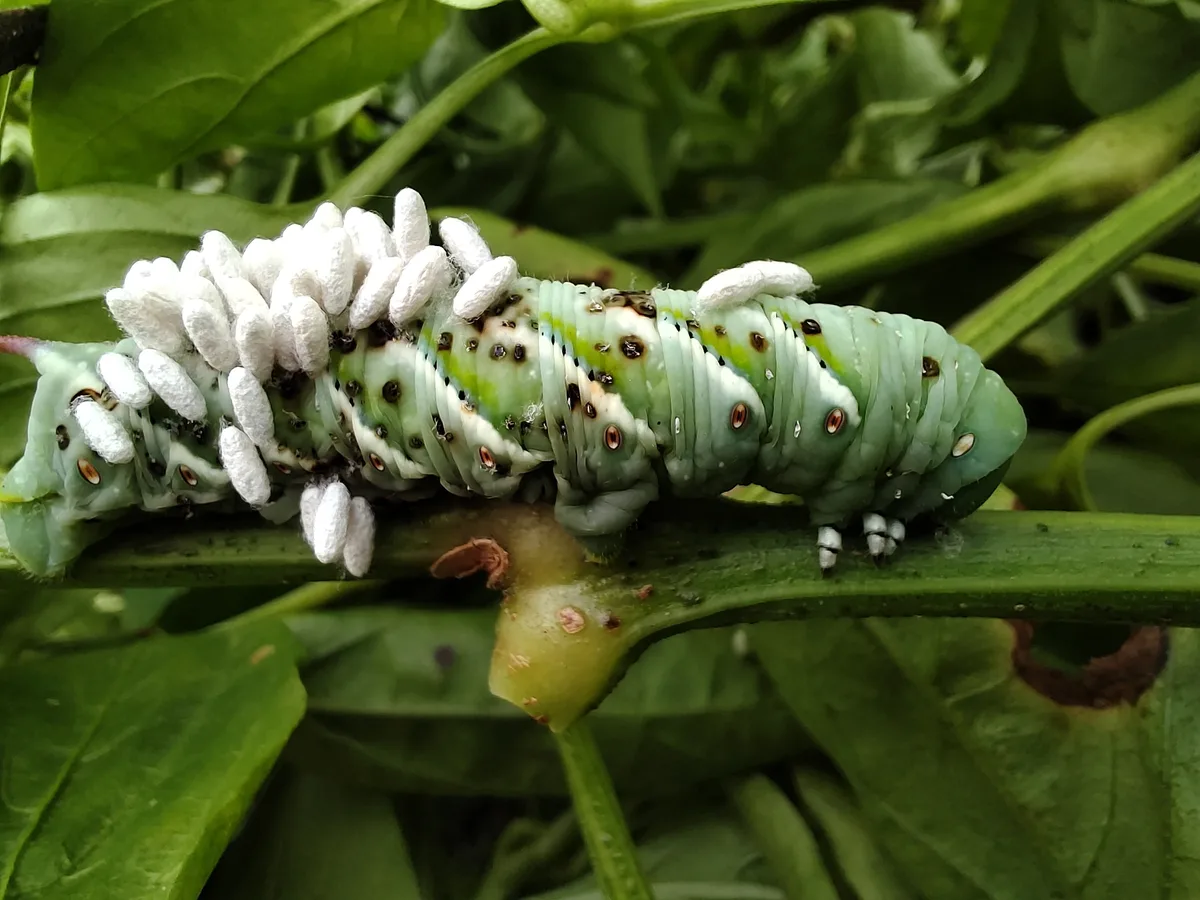
You can either buy these wasps at your local nursery or online, or you can introduce them through companion planting.
There are a few flowering plants out there that attract these helpful little insects, but none quite as effective as buckwheat and sweet alyssums.
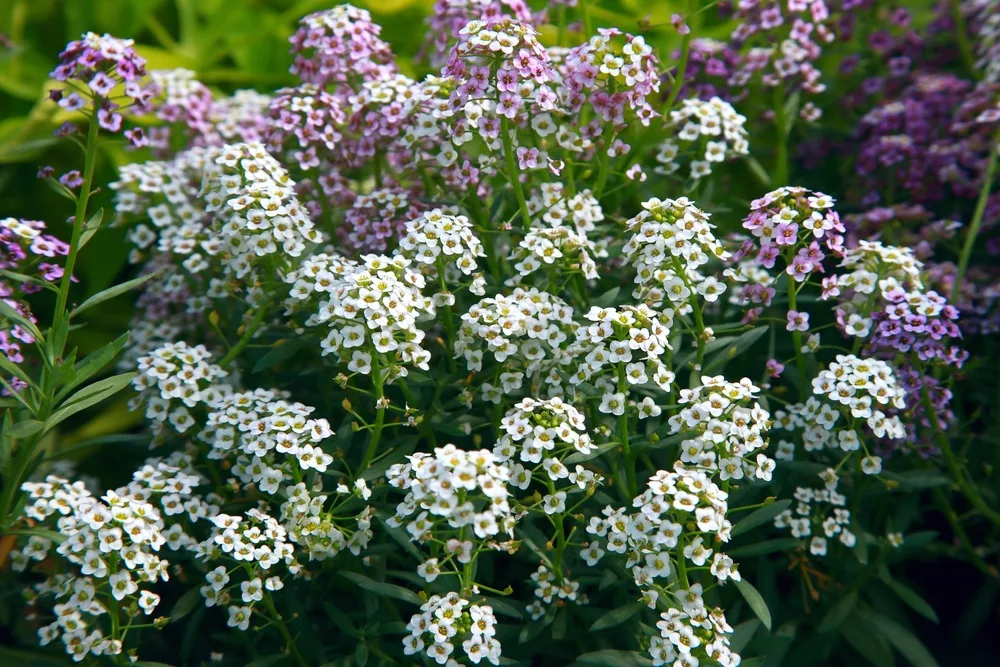
All you need to do is plant these flowering plants in your garden. In no time at all, you’ll have a host of Trichogramma wasps in your space, ready to get rid of lurking tomato hornworms.
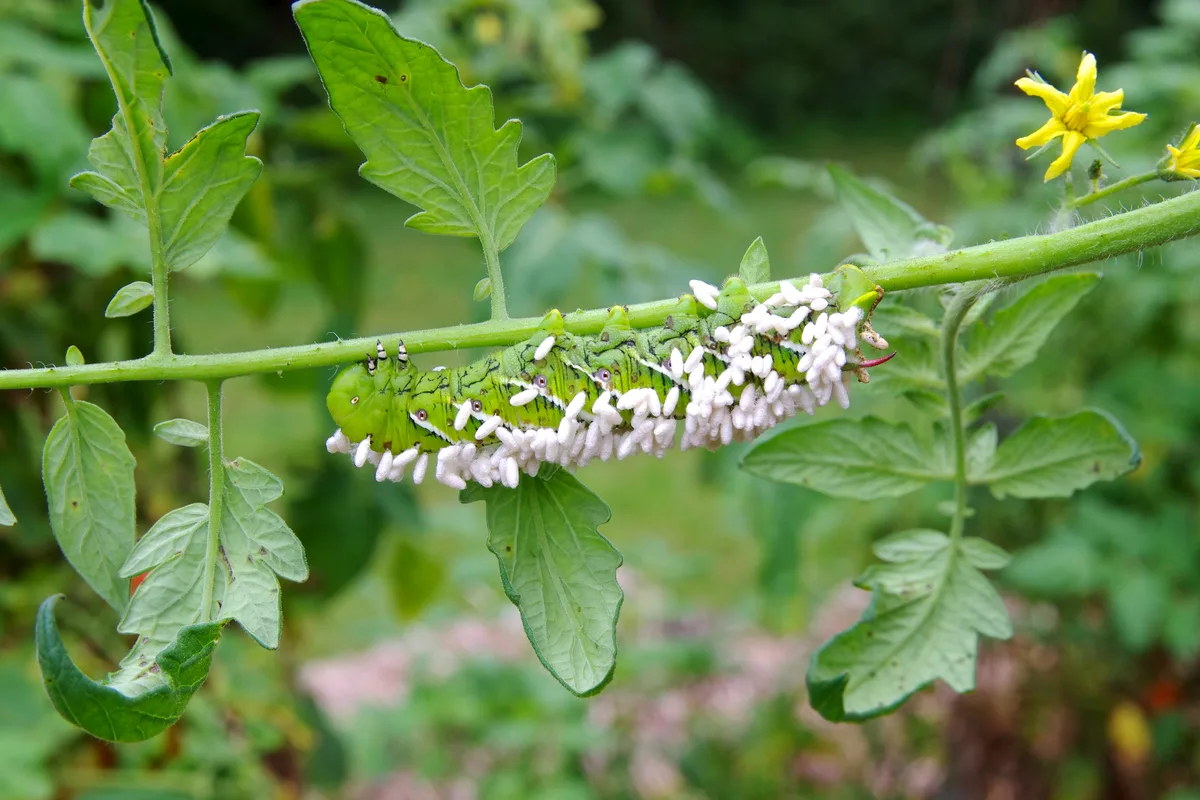
There are a few other beneficial insects that attack these hungry green caterpillars, including ladybugs and lacewings. They also munch on tomato hornworm eggs, preventing them from unleashing larvae hornworms on your tomato plants.
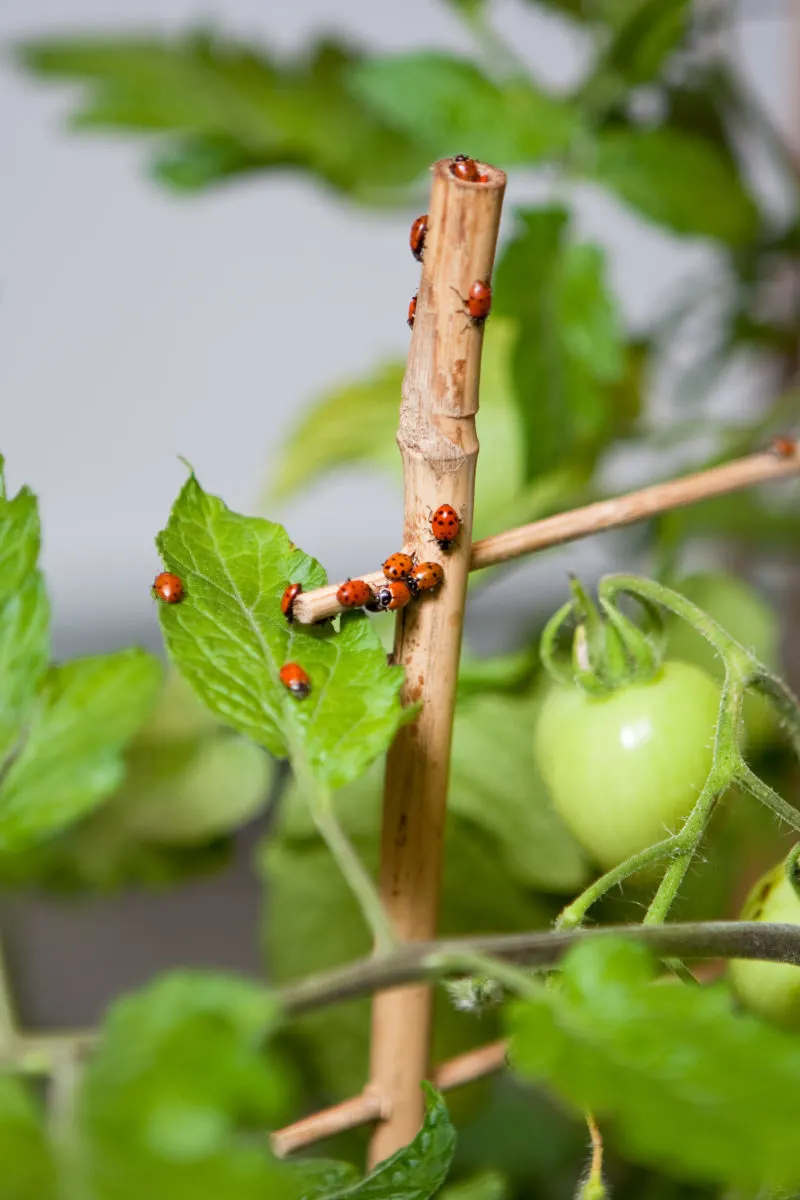
They too can be introduced to your garden artificially by releasing bugs that you buy online, or you can plant some of their favorite flowering plants, like marigolds and roses.
Neem Oil

In the fight against pests, neem oil is perhaps your best ally. As a staple for most gardeners, it’s easily accessible and luckily not a hassle to use.
Neem oil acts as a natural insecticide for many pests that plague tomatoes, including aphids and whiteflies. It’s also highly effective against tomato hornworms. Neem oil can also aid in combating some fungal diseases.

Unfortunately, as is the case with most things, there are some downsides to this method. While neem oil won’t damage your plants, it can damage and deter beneficial insects. Thus, in the fight against tomato hornworms, it’s best to choose your methods carefully. If you’ve worked hard on introducing several good bugs into your space, it might not be a good idea to use neem oil on your plants.
When applied to your tomato plants, neem oil creates a light coating on the leaves and stems. This not only stops eggs from hatching but also makes the leaves far less appealing to tomato hornworms. Neem oil also tends to suffocate any bugs on the leaves, killing them off completely.
Neem oil sprays are easy to apply and even easier to make. Simply mix 1 tablespoon of neem oil and 2 cups of water in a water spray bottle. You can spray your tomato plants as necessary to keep tomato hornworms from attacking. Remember to focus on the undersides of leaves, where most eggs are.
Botanical Bt

If you’ve got a particularly bad tomato hornworm infestation, you may need to go in with harsher control methods. Luckily you still won’t need to turn to harmful pesticides.
Botanical Bt (Bacillus thuringiensis) is one of the best natural pesticides for larger tomato hornworm infestations.
Bt is a natural bacteria, often found in the soil. As with neem oil, Bt coats the foliage of your tomato plants. When ingested by tomato hornworms, it paralyzes their digestive systems. They stop munching on your plants, eventually dying off. Unlike neem oil, it’s not as devastating to some beneficial insects, namely bees.
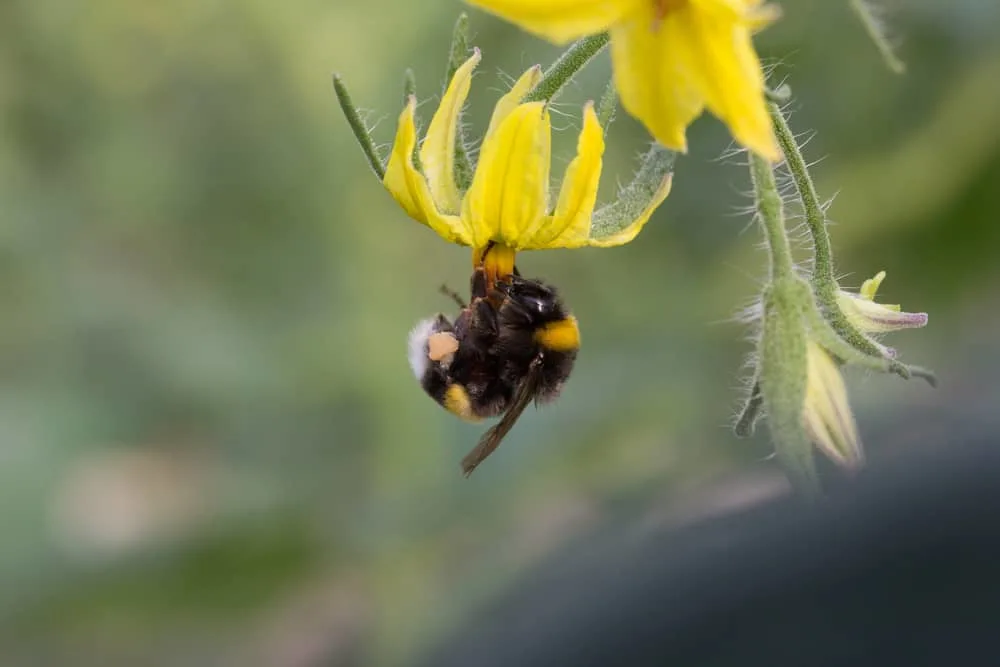
Bt works best when used on newly hatched tomato hornworms, but it’s still effective no matter the stage of their life.
There are various strains of Bt that work for different insects – which is why it won’t necessarily harm your beneficial insects. Bt kurstaki is the strain you need when controlling and preventing tomato hornworms.
Till The Soil
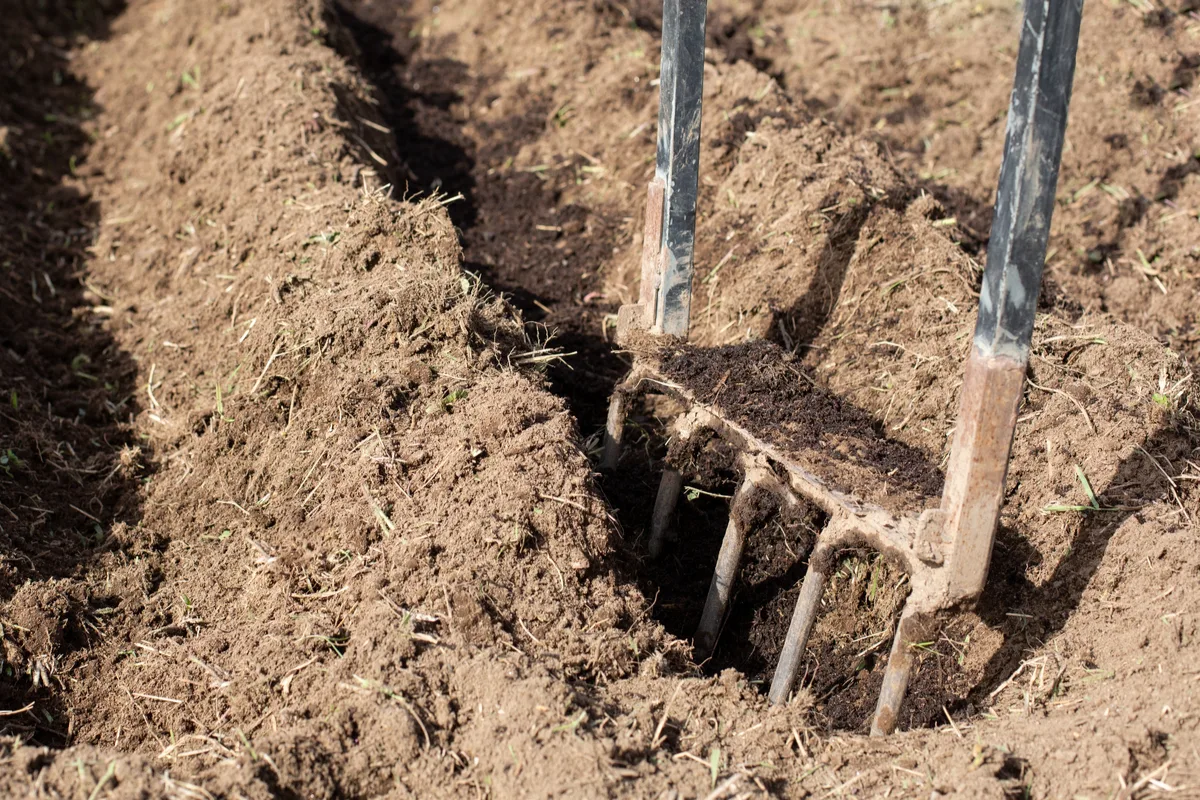
As mentioned, tomato hornworms overwinter in the soil, emerging as moths come summer. While not harmful in their final stage of life, they do lay eggs on vulnerable tomato plants, starting the destructive cycle all over again. Thanks to this habit, tomato hornworms can become an annual problem.
One of the best ways to prevent the resumption of the cycle is by tilling the soil at the beginning and end of the gardening season. This buries and kills any lingering tomato hornworm pupae deep within the soil, stopping them from becoming egg-laying moths.
Tilling soil is a garden habit most should incorporate into their pre-season gardening routine. It not only stops the tomato hornworm life cycle in its tracks but also gets rid of other overwintering pests.
Plenty of soil-borne diseases also tend to linger in the colder months and tilling also prevents them from proliferating and attacking your tomatoes and other plants. It also loosens your soil, destroys weeds, and ultimately sets your soil up for a successful growing season.
Mulching
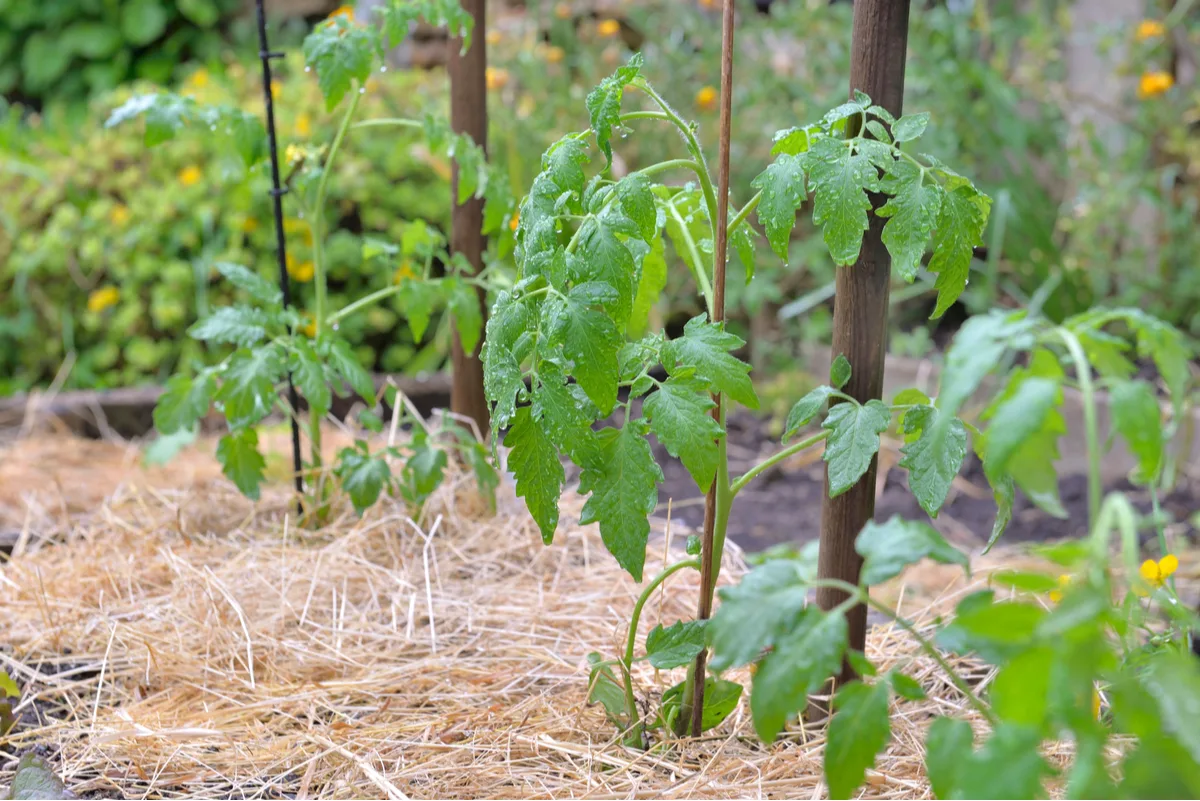
Mulching around the base of your tomato plants is another easy and multi-beneficial way of keeping tomato hornworms at bay. It prevents newly formed hummingbird moths from burrowing out of the soil and laying eggs on your tomato plants.
While there are several mulching materials out there, in the fight against tomato hornworms, a black plastic mulch is perfect. As a solid barrier, it keeps the moths from the surface, eventually causing them to die off under the soil.
Mulching has several other benefits, too. It keeps weeds at bay, along with several other overwintering insects and diseases. It also prevents water from splashing onto tomato plant leaves, stopping harmful fungal diseases from taking root.
Row Covers
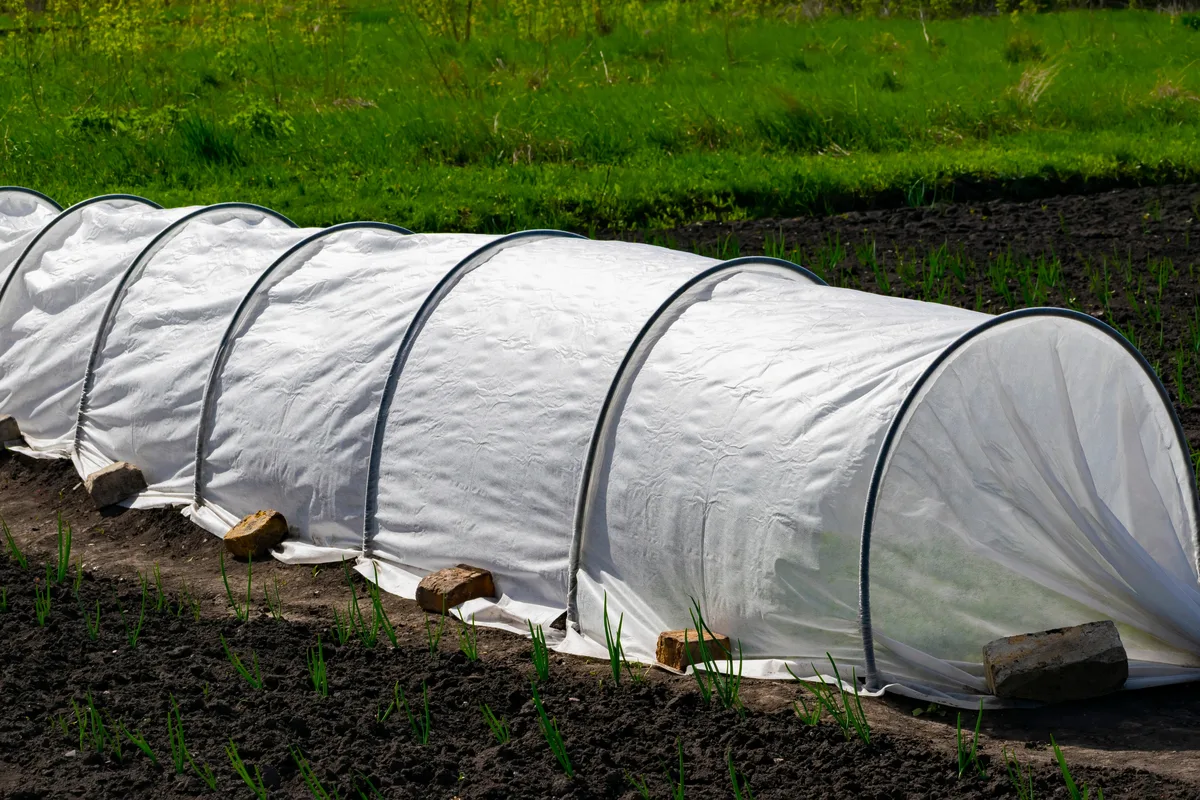
Seasoned tomato growers are no strangers to floating row covers. These handy tools aren’t expensive and are readily available. But for the DIYers out there, they’re also really easy to make. All you need is some shade cloth and PVC piping.
Row covers are a great barrier against tomato hornworms. More specifically, they keep hummingbird moths from settling on your tomato plants and laying their eggs.
These essential tools will protect almost all your plants from various pests and diseases. They also protect your plants from the worst elements of their environment, from the harshness of the sun and heat to the biting cold.
Crop Rotation

Like tilling your soil, crop rotation is a key gardening task that can save your tomato plants. If you’ve battled against tomato hornworms before, it’s best to change where you plant your tomatoes next season. Chances are that the new spot won’t have any overwintering tomato hornworm pupae.
Along with preventing tomato hornworm infestations, crop rotation helps prevent the proliferation of overwintering diseases and other pests. It also gives your soil a break between seasons – a major plus.
Tomato hornworms are one of the most destructive tomato pests out there, and unfortunately, you’ll more than likely encounter them in your tomato growing journey. They may look a little scary and have a monstrous appetite, but tomato hornworms can be dealt with easily.
The above natural control and prevention methods will help any level of tomato hornworm infestation. And most of them help protect your tomato plants from a variety of other threats too, ensuring a successful tomato harvest come summer.
